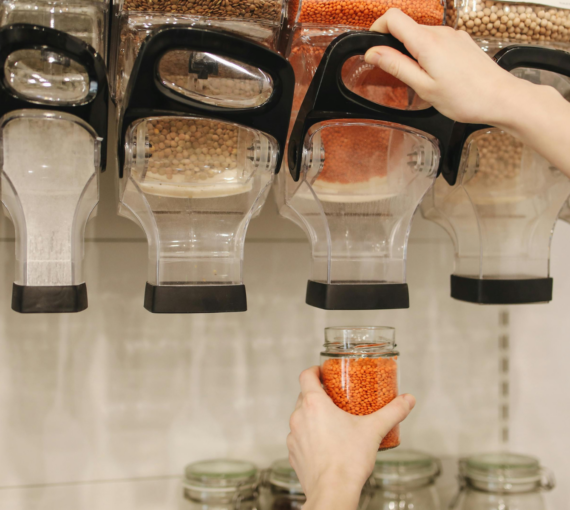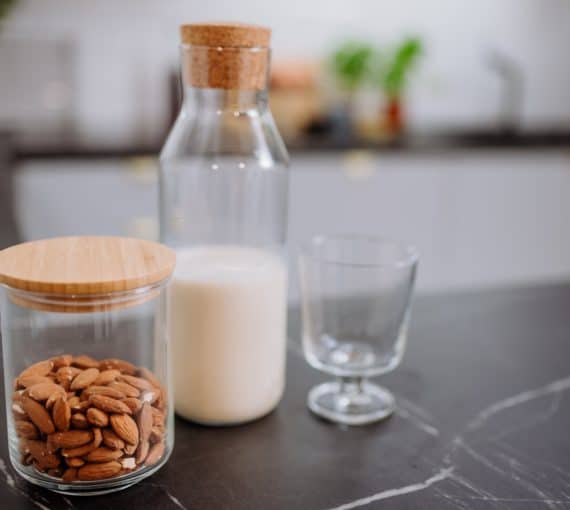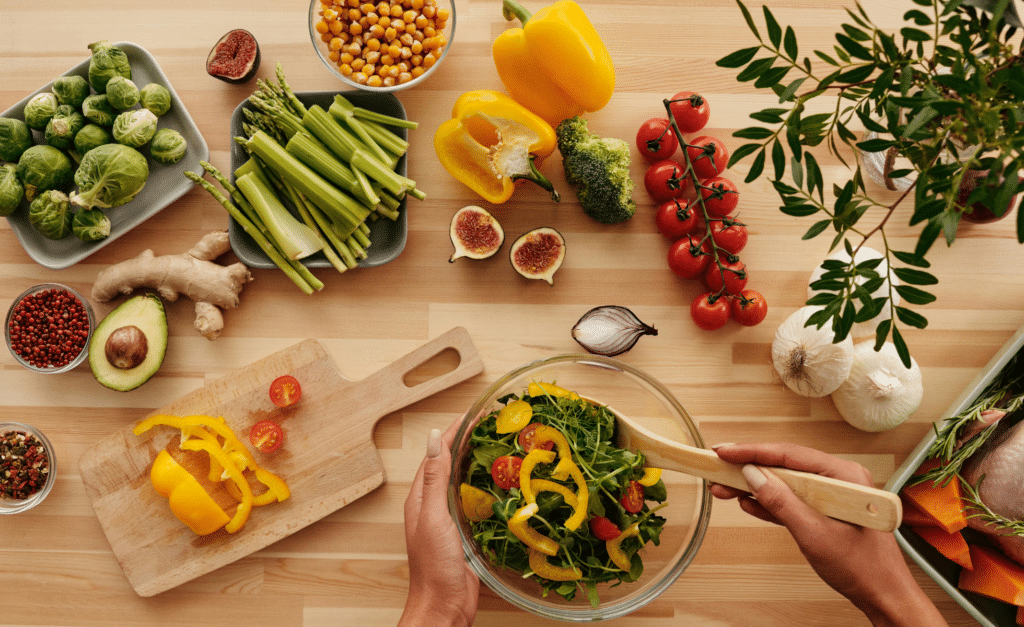
Moving toward a plant-based diet is great way to reduce your environmental footprint.
Transitioning to a fully or mostly plant-based diet can reduce your environmental footprint. You may also discover new, delicious dishes!
Remember: Your relationship with food is personal. Perfection isn’t the goal. Making changes to your eating habits should never come at the cost of your physical or mental wellbeing. There’s no “right way” to approach plant-based eating. Any steps you take — no matter how small — are valuable and worth celebrating.
Understanding barriers to plant-based eating
A plant-based diet isn’t accessible to everyone. Start where you are and only make changes that are compatible with your lifestyle.
Common barriers include:
- Access. Many communities throughout North America lack access to fresh produce and plant-based options. Called “food deserts,” these neighbourhoods may only have convenience stores and/or fast-food restaurants within a reasonable distance.
- Affordability. Plant-based alternatives and fresh produce can be more expensive than animal products.
- Culture. Traditional dishes and diets may centre around meat, dairy and/or seafood. In some cultures, eating meat represents prosperity, hospitality and strength. Some see declining animal products at family gatherings as disrespectful.
- Social concerns. Family meals and social gatherings often revolve around shared food traditions. A plant-based diet can make some folks feel excluded or pressured to conform.
- Health and dietary restrictions. Some people may have allergies to common plant-based proteins. Certain medical conditions have specific dietary considerations.
The environmental impact of animal agriculture
Land use
Agriculture uses almost half of Earth’s habitable land. Meat and dairy production accounts for 83 per cent of this agricultural land use. Expansion of land for agriculture is the leading driver of deforestation and biodiversity loss.
Research shows that global land use for agriculture would be reduced by 75 per cent if the world adopted a plant-based diet.
Water use
Food production consumes 70 per cent of accessible freshwater worldwide. This ripples through entire ecosystems and communities, affecting water availability and quality.
Beef is the worst water culprit. Producing one pound of beef can use up to 15,000 litres of water. Producing one pound of edamame requires about 968 litres.
Animal agriculture also contributes to water pollution through manure runoff, pesticides, fertilizers, antibiotics and hormones. This waste affects soil and water quality, threatens biodiversity and disrupts ecosystems.
Carbon emissions
Animal agriculture contributes about 18 per cent of global greenhouse gas emissions. These primarily come from deforestation for feed and grazing, methane from enteric fermentation, manure management and soil degradation and reliance on fossil fuels in production and transportation.
Plowing grasslands and forests releases carbon stored in soil into the atmosphere. This process is even more harmful when fertilizers are used on feed crops. Fertilizing feed for livestock emits nitrous oxide — a greenhouse gas 300 times more potent than carbon dioxide. Livestock consume this feed and produce manure. That generates methane, which is 80 times more climate warming than carbon dioxide in the short term.
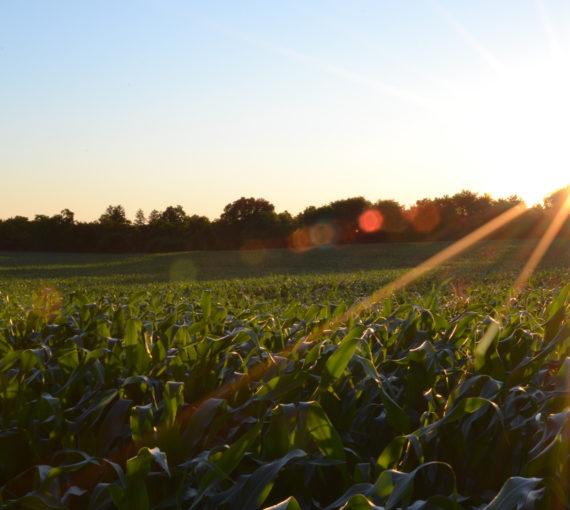
Food and climate change
Mindfully choosing what you put in your body — lowering your “food print” — is one of the easiest ways to make a positive difference for the planet.
Vegan versus plant-based: What’s the difference?
Often used interchangeably, these terms represent different philosophies and levels of commitment.
Plant-based eating:
- Focuses on consuming food from plant sources
- Allows for flexibility and personal interpretation
- Emphasizes progress over perfection
- Welcomes any level of participation
Veganism:
- Represents a broader lifestyle and ethical philosophy
- Excludes all animal products, including in non-food items
- Typically requires more comprehensive lifestyle changes
- May feel less accessible or practical to some
“A vegan diet is much better for the environment than all of them — half again the emissions impact of a low-meat diet — but cutting back on meat and animal products is a step in the right direction and can make a difference.”
David Suzuki, “Study shows vegan diet best for people and planet“
Five ways to start a plant-based diet
The key to lasting change is making gradual, sustainable adjustments to your current habits.

1. Go meatless one day a week
Dedicate one day a week to eating only plant-based meals. This will help you explore new recipes and get comfortable with plant-based eating and cooking without feeling overwhelmed.
As you become more comfortable, gradually increase to two to three meatless days a week.
Bonus: Skipping meat for one day a week can reduce your annual carbon footprint as much as not driving a car for a whole month!
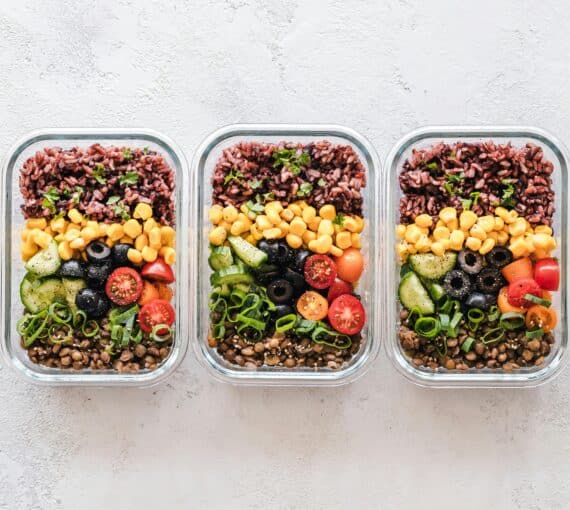
2. Plan meals
Meal planning will help make the transition smoother. The bonus? You’ll feel more confident and empowered by your food choices, reduce food waste, save money and have an easier time grocery shopping!
Survey what you already have and what you may need. Think about leftovers for lunches, snacks and other meals.
Need inspiration or help thinking of recipes using the miscellaneous ingredients you already have? Do a web search with your list or use a website like Supercook or Epicurious.
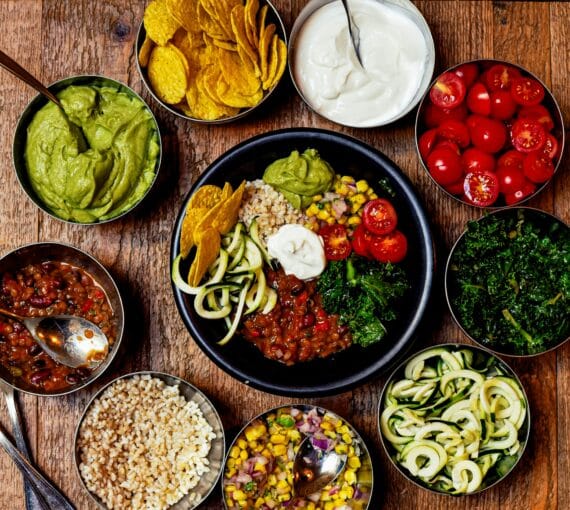
3. Find plant-based versions of your favourite dishes
Start with familiar meals you already love and use plant-based ingredients. This way, you won’t feel like you’re missing out and you’ll discover how delicious plant-based eating can be.
Love burgers? Try black bean burgers! Love tacos? Try lentil tacos! Love chicken wings? Try cauliflower wings! With a little online research and some creativity, you’ll be sure to find plenty of plant-based alternatives to your favourite meals. Starting with familiar flavours is a great way to make the transition smoother.
Start a dinner party club or host a potluck for your friends and/or family to take part in the journey with you!
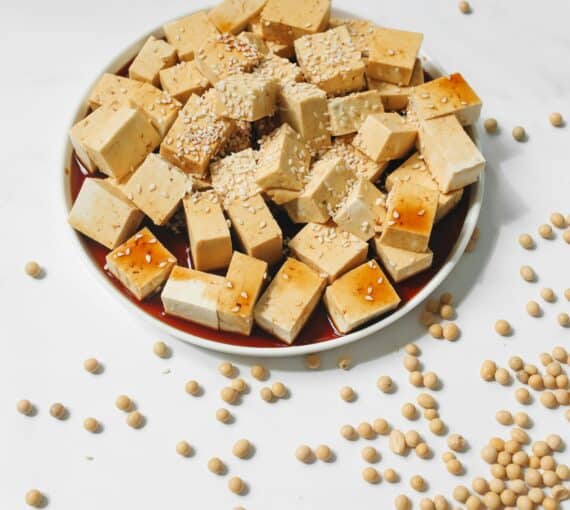
4. Swap animal products for plant-based alternatives
As you run out of animal-based products, start swapping them with plant-based alternatives.
For example:
- Animal protein → Lentils, tofu, edamame, chickpeas, etc.
- Butter → Coconut oil, avocado oil, olive oil, etc.
- Cheese → Nutritional yeast, cashew cheese, etc.
- Cow’s milk → Plant-based milk
- Gelatin → Agar-agar, pectin and carrageenan
- Honey → Maple syrup, agave, date syrup, coconut nectar, etc.
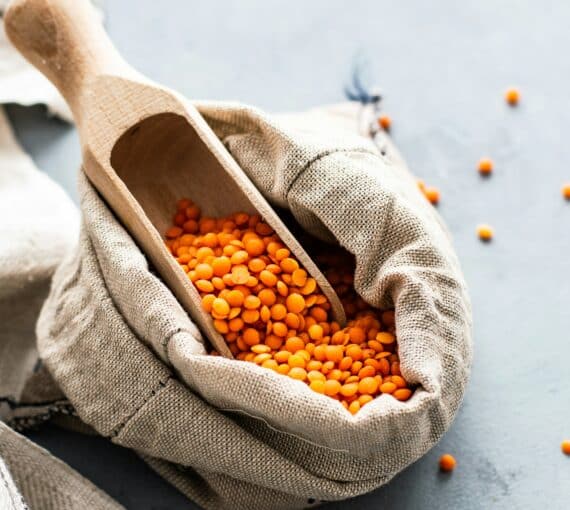
5. Stock up on plant-based staples
As you become more comfortable with cooking plant-based meals, identify what items you’re using the most (or like the most!). Begin meal planning around those.
Visit the bulk store to keep your pantry stocked with essentials like beans, lentils, nuts, seeds, whole grains, etc. This will help you continue to cook your plant-based meals with ease. You may save some money too!

